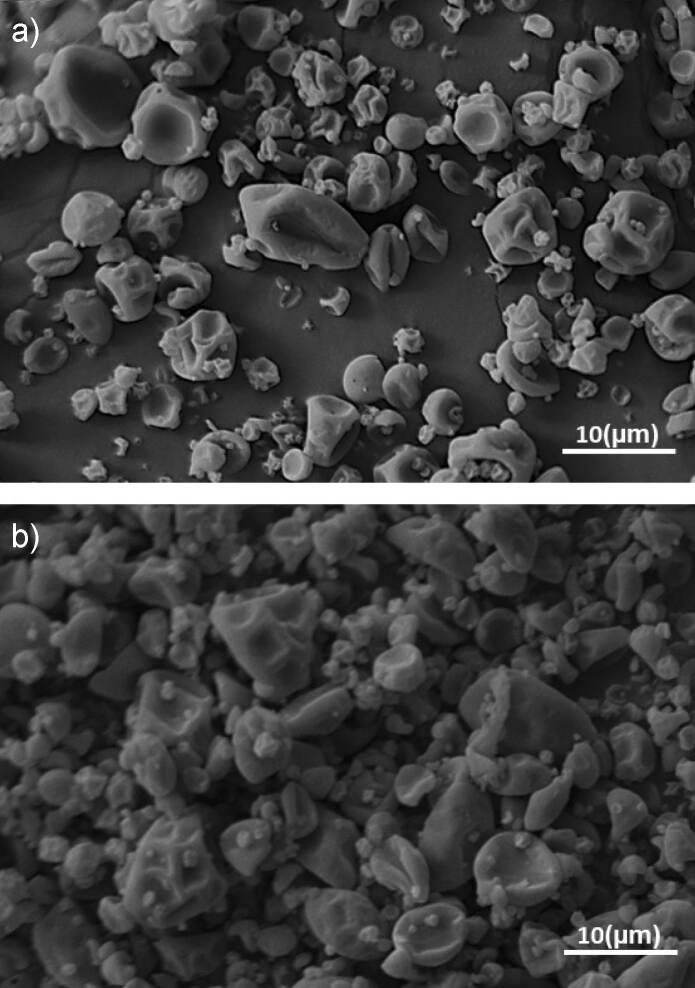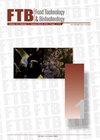Effect of Microencapsulation on Chemical Composition and Antimicrobial, Antioxidant and Cytotoxic Properties of Lemongrass (Cymbopogon flexuosus) Essential Oil.
IF 2.3
4区 农林科学
Q3 BIOTECHNOLOGY & APPLIED MICROBIOLOGY
引用次数: 1
Abstract
SUMMARY Research background Lemongrass (Cymbopogon flexuosus) essential oil exhibits antimicrobial and antioxidant properties due to the presence of α-citral and β-citral. Essential oils are susceptible to volatilization and oxidation when applied to food matrices. Therefore, a barrier is needed to protect this material. The present study aims to produce microparticles containing lemongrass essential oil, with gum arabic and maltodextrin using spray drying technology. Experimental approach Lemongrass essential oil was extracted by the hydrodistillation method and later microencapsulated with different wall materials. Free and microencapsulated lemongrass essential oil was evaluated for the cytotoxic activity (using Artemia salina as test sample), chemical composition (GC-MS), encapsulation efficiency, antioxidant activity (DPPH, ABTS and FRAP), antimicrobial activity and minimum inhibitory concentration. Results and conclusions The lethal concentration (LC50) of lemongrass essential oil in the cytotoxic test was 8.43 μg/mL against Artemia salina; a high activity that can be associated with the presence of α-citral (~33%) and β-citral (~21%) in the samples, since these were the main compounds with bioactive properties. The highest value of microencapsulation efficiency (88.11%) was obtained when only gum arabic was used as wall material. In general, the microparticles showed satisfactory antioxidant activity (expressed as Trolox equivalents, between 348.66 and 2042.30 µmol/100 g) and bactericidal effect in vitro against Gram-positive and Gram-negative microorganisms. In conclusion, the microencapsulated lemongrass essential oil is a promising functional additive in the food and pharmaceutical industries. Novelty and scientific contribution This study shows that microparticles containing lemongrass essential oil can be prepared using gum arabic and maltodextrin as wall materials by spray drying, resulting in high microencapsulation efficiency. The drying process maintained the antimicrobial and antioxidant properties of the essential oil. Therefore, the microencapsulated lemongrass essential oil is considered a natural, functional and promising additive in the food industry. Its antimicrobial action can increase the shelf life of fresh and semi-fresh products such as cheese, yogurts and meat products. In addition, its antioxidant action can delay the lipid and protein oxidation in food products.



微胶囊化对柠檬草精油化学成分及抑菌、抗氧化和细胞毒性的影响
研究背景:柠檬草精油因含有α-柠檬醛和β-柠檬醛而具有抗菌和抗氧化的特性。当应用于食品基质时,精油容易挥发和氧化。因此,需要一个屏障来保护这种材料。本研究旨在利用喷雾干燥技术制备含有柠檬草精油、阿拉伯胶和麦芽糊精的微颗粒。实验方法:采用加氢蒸馏法提取香茅精油,并用不同壁材进行微囊化。对游离香茅精油和微胶囊香茅精油的细胞毒活性(以盐蒿为样品)、化学成分(GC-MS)、包封效率、抗氧化活性(DPPH、ABTS和FRAP)、抗菌活性和最低抑菌浓度进行了评价。结果与结论:柠檬草精油对蒿的细胞毒试验致死浓度(LC50)为8.43 μg/mL;高活性可能与样品中α-柠檬醛(~33%)和β-柠檬醛(~21%)的存在有关,因为它们是具有生物活性的主要化合物。以阿拉伯胶为壁材时,微胶囊化率最高,为88.11%。总的来说,微颗粒对革兰氏阳性和革兰氏阴性微生物具有良好的抗氧化活性(以Trolox当量表示,在348.66 ~ 2042.30µmol/100 g之间)和体外杀菌作用。综上所述,微胶囊香茅精油是一种很有发展前景的功能性添加剂。创新与科学贡献:本研究表明,以阿拉伯树胶和麦芽糖糊精为壁材,通过喷雾干燥制备出含有柠檬草精油的微颗粒,微胶囊化效率高。干燥过程保持了精油的抗菌和抗氧化特性。因此,微胶囊香茅精油被认为是一种天然的、功能性的、有发展前景的食品添加剂。它的抗菌作用可以延长新鲜和半新鲜产品的保质期,如奶酪、酸奶和肉制品。此外,其抗氧化作用可延缓食品中脂质和蛋白质的氧化。
本文章由计算机程序翻译,如有差异,请以英文原文为准。
求助全文
约1分钟内获得全文
求助全文
来源期刊

Food Technology and Biotechnology
工程技术-生物工程与应用微生物
CiteScore
3.70
自引率
0.00%
发文量
33
审稿时长
12 months
期刊介绍:
Food Technology and Biotechnology (FTB) is a diamond open access, peer-reviewed international quarterly scientific journal that publishes papers covering a wide range of topics, including molecular biology, genetic engineering, biochemistry, microbiology, biochemical engineering and biotechnological processing, food science, analysis of food ingredients and final products, food processing and technology, oenology and waste treatment.
The Journal is published by the University of Zagreb, Faculty of Food Technology and Biotechnology, Croatia. It is an official journal of Croatian Society of Biotechnology and Slovenian Microbiological Society, financed by the Croatian Ministry of Science and Education, and supported by the Croatian Academy of Sciences and Arts.
 求助内容:
求助内容: 应助结果提醒方式:
应助结果提醒方式:


